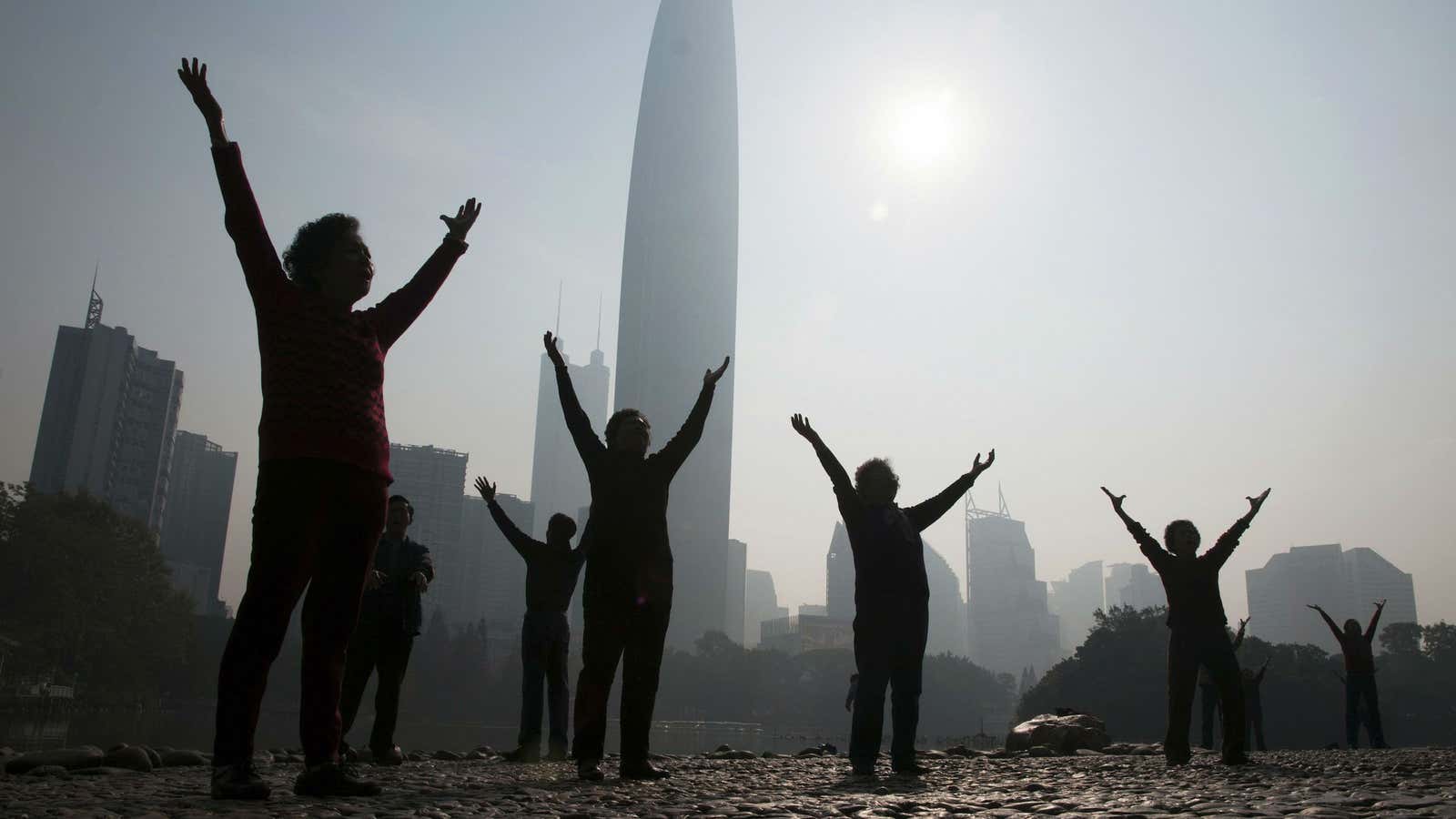China’s ministry of environment has announced proudly that air pollution eased in 74 cities that are part of a national clean-up campaign. Levels of PM2.5, dangerous air particulates small enough to enter people’s bloodstream, fell by an average of 11% in these cities last year, according to a press release (link in Chinese).
But that nugget of good news is contradicted by the fact that only eight of those 74 cities met basic national air quality standards, according to an earlier report from the same ministry. It’s an example of the one step forward, two steps back nature of progress that characterizes China’s battle with smog.
Ever since a dense haze settled on the Chinese capital in 2013 and didn’t leave for days, a period some dubbed the ”airpocalypse,” officials have declared a “war on pollution” and pledged to resolve the problem once and for all. An updated environmental law gave registered green groups the right to sue companies for environmental abuses—several lawsuits are now underway. Officials pledged to ”name and shame” the most polluted cities as well as shut down 50,000 coal-fired furnaces across the country. Drones are being deployed to monitor and, possibly one day, zap pollution.
But two years later, the fight isn’t going so well. Smog continues to envelope Beijing and other big cities. A recent study of 31 Chinese cities by Greenpeace found that air pollution is causing more premature deaths than smoking, remarkable in a country where smoking rates are among the highest in the world.
Critics say that is because China’s campaign is still only half-hearted. According to a report by the Clean Air Alliance of China, the country only increased its environmental-protection budget by 0.37% last year, while spending on the military got a 12% boost.
And it isn’t entirely clear where the smog-fighting money is being spent. Earlier this month, China’s anti-corruption agency accused the ministry of environment of siphoning off money and tampering with impact assessments.
